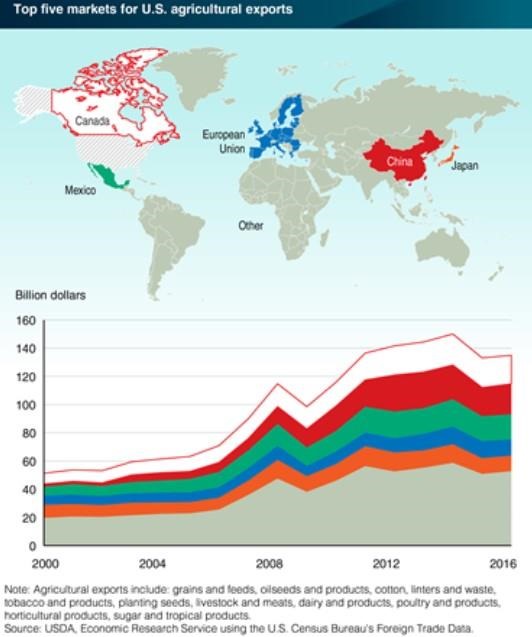The United States exported $135 billion worth of agricultural goods in 2016. This is down from a record of $150 billion in 2014. While the Nation exports agricultural goods to most countries worldwide, a significant share goes to major trading partners. In 2016, 61 percent of the value of agricultural exports went to Canada, China, Mexico, the European Union (EU-28), and Japan.
The dominance of key markets is not a new phenomenon. In fact, these five destinations have accounted for close to 60 percent of agricultural export value since at least 2000. In the case of Canada and Mexico, proximity plays a large role in its trade relationship with the United States. Additionally, regional trade agreements increased trade between the country and its nearest neighbors.
The large share of trade going to China, Japan, and the EU-28 is influenced by the sheer size of the economies involved. The EU-28, China, and Japan are the three leading economies after the United States in terms of gross domestic product, and each country accounts for a significant share of global imports of agricultural goods. This chart is drawn from data in the Foreign Agricultural Trade of the United States (FATUS) data product, updated in April 2017.

Source:usda.gov